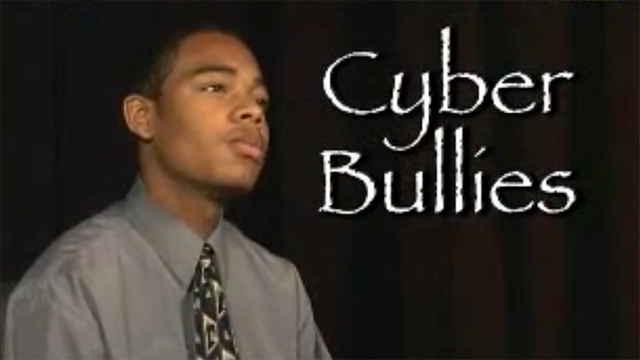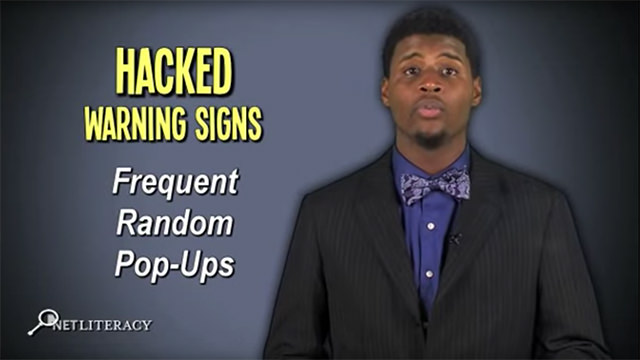Safe Connects Training Outcomes: a Survey of Four Schools in Two School Districts and 954 Respondents Receiving the Safe Connects Training Over Nine Years to Quantify Effectiveness and Outcomes
Summary: Beginning in 2006 and continuing through 2014, Net Literacy conducted nine Safe Connects presentations that were followed by individual surveys of elementary school students, middle school students, high school students, and parents that had received the training. The study was comprised of 785 respondent students and 169 respondent parents. The respondents were not selected randomly, and consequently the information presented is not statistically significant.
The single constant in all presentations is that high school student volunteers presented the Safe Connects materials using a scripted PowerPoint – similar to those that are on this website. The results were encouraging – approximately 91% of all student respondents indicated that they had “learned new information” and 95% would recommend that “their friends receive this training.” Approximately 89% of all parents indicated that they “had learned new information” and 95% recommended that “their sons and daughters” receive this training.
In 2018, the training materials were reviewed for appropriateness and applicability. Once the PSA program launched in 2008, an increasing amount of media was included in the presentations since rich media is very engaging to students.

Background: In 2004, Net Literacy’s student volunteers began developing an Internet safety training program to include as a component of their online training. It is essential to be net savvy if we are to thrive in the 21st century, and informed and engaged users make the Internet a positive and enriching experience. The Safe Connects program was developed to increase online safety education using the voice of youth to teach teens.
During a summer program funded by Lilly Endowment in 2005, high school Net Literacy student volunteers representing six Net Literacy chapters researched, scripted, and created three age-appropriate versions of the Safe Connects content. The programs were designed to be “real” and explain the consequences of making poor choices when accessing the Internet. Initial focus groups indicated that students would “tune out” unless the presentation contained new information they were not aware of and deemed relevant. Generally, the content and delivery was designed to differ from traditional training approaches conducted by law enforcement, educators, and parents. It is unfortunate that some teens “tune out” discussions from these groups of adults.
Safe Connects training minimum outcomes: Net Literacy established targets that would indicate that the Internet safety program were a success if:
- Parents – an average of 75% learned new information about Internet safety.
- Parents – an average of 90% would recommend this training to students and fellow parents.
- Students – an average of 80% learned new information about Internet safety.
- Students – an average of 70% would recommend this training to parents and fellow students.
Teen focus group results: Prior to designing the Safe Connects program, Net Literacy student board members conducted five informal focus groups of high school students. Based upon these focus groups, it was determined that: (a) the training would be most positively received if it were conducted on a students-to-students basis rather than on an adult-to-student basis, (b) the Internet safety training material must be age-appropriate (some older teens that received training that they believed was more appropriate for younger teens would both resent the training and become disruptive during the instructional process), (c) the Internet safety training had to be “real” – if poor choices could result in adverse consequences, those consequences had to be relevant to the teen audience receiving the training, (d) the training should should include both a visual and an audio component because of different learning styles, and (e) the scope of content should include higher-risk activities and subjects that were sensitive (e.g., hate websites and sending embarrassing or explicit pictures) but of interest to teens.
Further, many students expressed “cynicism” about existing training conducted by teens that they believed were written by authoritarian sources, such as law enforcement officers or educators. This seemed to be of particularly sensitivity and importance when discussing Internet safety, since many of the focus group participants believed that the time they spent on the Internet was “personal,” “was not the school’s business,” and when communicated by parents, “represented parents attempts to control them (about a topic that they knew little about).”
Vetting Methodology: In 2004, three teams of students developed Internet safety content for 3-6 graders, middle school students, and high school students. Later that year, the content was reviewed by Net Literacy student board members and further modified. The three training programs were sent out for review and comment to: the Indiana Department of Education’s “Indiana School Safety Specialist Academy,” Purdue University’s CERIAS (Center for Education and Research Information), a middle school Parent Teacher Organization, a group of parents with middle school and elementary school children, and city and county law enforcement officers that specialized in Internet crimes against youths. Very few changes were requested. Dr. Gene Spafford, Executive Director of CERIAS supported this student initiative and joined Net Literacy’s Honorary Board of Directors.
Survey Methodology: While Safe Connects training was conducted in schools, nonprofits, and churches beginning in 2005, several training programs were conducted in a more controlled manner since they required each attendee to complete an anonymous survey to rate the Safe Connects training they received.
During a nine year period, six groups of elementary school students, three groups of middle school students together with their parents, and one group of high school students received the age-appropriate presentations conducted by Net Literacy student volunteers using the PowerPoints that are on this website. With the exception of the high school student test, the Safe Connects training was conducted in the school auditorium. High school student training was conducted in three classrooms so that students could listen to the presentation, take the survey, and engage in a focus group conducted by a trained facilitator. In cases when the training was conducted without parents in attendance, immediately upon completion of the training, student volunteers visited the students classrooms to answer additional questions. Teachers were present during this second phase of the training as student volunteers answered Internet safety questions asked by elementary school students.
At the conclusion of the formal Safe Connects presentation, students and parents were provided anonymous surveys to complete – the responders were also specifically asked not to provide any identifiable information on the survey. It should be noted that Internet safety is a continually evolving subject, and the presentations have been modified over this time period to reflect society’s current condition and safety challenges. Training was conducted in urban and suburban school districts, and in schools whose students came from families that were predominately low income, middle income, and higher income neighborhoods. The respondents represented a diverse group of students.
Survey Illustration: In April 2006, Safe Connects conducted a test at an elementary school within the Carmel Clay School district (4th, 5th, and 6th grade students and their parents). Student volunteers received 131 surveys from parents and 80 surveys from student attending a 7:00 presentation in the school’s auditorium. As depicted below, the program met the minimum success criteria. Please note that this was a self-selected sample (e.g., those that read about it in the paper or saw it on the school’s website were cognizant of the program), is not statistically significant, and can not be projected to a larger universe. The Safe Connects training program used was geared to 4th through 6th grade students. That notwithstanding, the results are summarized below:
- 82% of all parents learned new information
- 90% of all parents recommended that other parents receive this training
- 93% of all parents recommended that other youths receive this training
- 92% of all parents believed their children learned new information
- 93% of all students learned new information
- 96% of all students recommended that other parents receive this training
- 93% of all students recommended that other students receive this training
- 92% of all students believed their parents learned new information
Note: the older students were, the fewer said that they learned something new (100%->85%), which was expected for this presentation that was targeted to 3-6 graders.
Summary of Survey Responses for 785 students and 169 adults: This material is being compiled and will be presented in detail. Initial findings are:
- The variance between the responses of parents of 4th, 5th, 6th, and 9th graders were minimal (+/-2%)
- For the sample of 785 students:
- 91% of all students learned new information – with 9th grade students providing the highest scores
- 95% of all students recommended that other students receive this training
Note: Of the sample size, 83% and 27% of the student and parent respondents, respectively, attended an inner-city urban school district where 84% of students were on free or assisted lunch programs, 70% lived in single-parent families, and 21% of the students attended special education classes, and attended school in a district having a 70% annual school transfer rate.
Most Frequently Asked Questions After the Presentation: Depicted below are the most frequently asked questions after the presentation by elementary school students and their parents during the FAQ period. Elementary school students tended to ask the most questions after the Safe Connects presentation, with up to 24% of the audience raising their hands to ask questions.
Students:
- Cyber-bullies concerns
- Hacker concerns
- Internet predator concerns
- Facebook questions
- Spyware dangers
- Identify theft questions
- Instant Messaging dangers
- Email dangers
Parents:
- Internet predators that encourage youth to attend “face-to-face” meetings
- How to check if my son or daughter is using Facebook and related questions
- What software provides Internet usage logs and IM conversations records
- How parents can use parental filtering and track their children online
- Questions about adware, spyware, chatrooms, and IM
- More specifics information about “dangerous” examples told by students
- More specific examples that parents could discuss with their children – especially about Internet predators and cyber-bullies
- More detail about the dangers of providing too much information and privacy related questions
- Questions about firewalls, pop-up blockers, and blogs
For more information, email danielkent(at)netliteracy.org

















